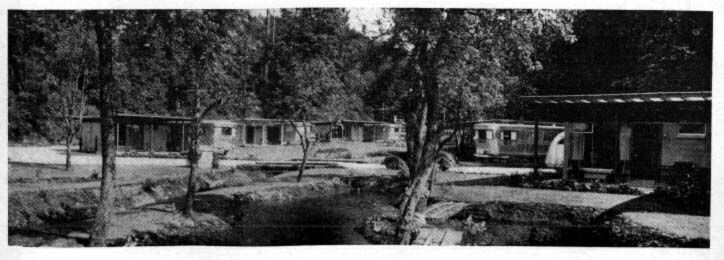
Trailer park, location unknown. Consumer Reports, 1956.
The post-war years saw the expansion of the trailer industry despite difficulties in getting raw materials which closed some plants.33 The demands of production during the war had improved expertise in the design and construction of mobile homes. In 1948 some manufacturers introduced innovations such as fireplaces, shower rooms, second stories and "expansible" units that unfolded like an accordion to provide up to triple the living space.34
The length of these new models was expanding though the width remained at a narrow 8 feet which was most likely related to problems in shipping wider loads by rail or over the narrow roads of the time. More and more the trailer was becoming the mobile home; a comfortable and affordable housing alternative.

During this time of expansion and improvement in mobile home design, the Farrington and Brault partnership started to sell mobile homes along with the rental of park space. The war had familiarized people with trailers as homes and the post-war demand brought about a chronic shortage of suitable parks for home sites. Most park owners began to sell trailers to take advantage of this shortage, letting in only those trailers sold from their sales lots.
The late James Farrington, then a young man, was sent out to the manufacturers in Indiana and Michigan to bring the trailers back for resale: